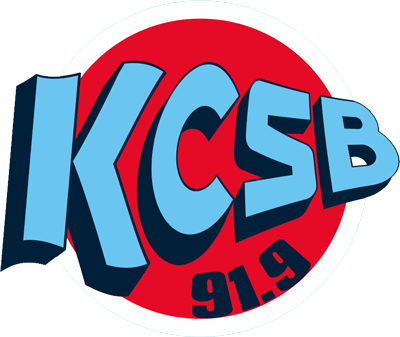Way Back Then: “Don’t Tell Me Now” by The Halo Benders
[March 28, 2016]
By Spencer VH
Many side projects of famous or notable musicians are often thought as a lesser divergence of their more recognizable work. Even the concept of a ‘super group’ has often delivered fairly meager results throughout music history. While you could consider The Halo Benders to be both a side project and a super group, the actual results of the partnership between Beat Happening’s Calvin Johnson and Built To Spill’s Doug Martsch is one of the stranger and most intriguing indie rock bands of the mid 1990’s.
Calvin Johnson is a life-long member of the Olympia, Washington music scene as a musician, radio host, producer and label head of K Records. His band Beat Happening developed an early relationship with punk pioneers Fugazi, he has produced records by Modest Mouse and Beck and was even a personal friend of a young Kurt Cobain. In the early 1990’s, Doug Martsch, then guitarist/vocalist of Idaho’s Treepeople, temporarily transplanted to the Seattle area with the band before launching his own band, Built to Spill. While Johnson resided firmly in the underground, Martsch’s Built to Spill signed a contract with Warner Bros. and began their still firmly intact career as one of the best indie rock bands of the past three decades.
Although the bands that were their main focuses went in very different directions, the collaborative project between the two friends and Built to Spill drummer Ralf Youtz melded and came together naturally. Debuting in 1994 with ‘God Don’t Make No Junk’, The Halo Benders style was distinct off the bat. Fans of Johnson and Martsch know that their voices are incredibly recognizable, Johnson’s for it’s deep drone and Martsch’s for it’s wandering highs. While you may assume their music would see both ends of the scale unite in harmony, the end result is far from that. Johnson and Martsch instead almost seem to be singing completely different songs, with very little repetition or interconnection between their words on any given composition. Verses are often sung over each other, choruses ring loud yet unrelated. Musically, their upbeat pop-rock was a danceable and fun alternative to the darker music of the times. Martsch has been quoted as saying that they didn’t write the lyrics together or acknowledge each other’s words when it came to the song they were a part of. What remains are songs that wander lyrically between both ends of the spectrum between happiness and sadness. Johnson’s off-the-wall quasi-spoken-word poetry book ends sing-song grounded realities.
With their second album, 1996’s ‘Don’t Tell Me Now’, the band slowed down their sound just enough for their melancholic lyrics to further match their music. Including the pseudo-theme song ‘Halo Bender’, the eleven song effort saw ranges into other genres like folk, alt-country and power-pop. For a band that was neither members main focus, the intricate and lighthearted compositions of the Halo Benders were sophisticated and most importantly did lean either way in feeling too familiar to Beat Happening or Built to Spill. The songs were tighter and more polished than those on their debut, but still captured the spirit of a sunny day and that impossible-to-capture and sometimes indescribable juvenile ‘fun’. While ‘Don’t Tell Me Now’ was not the sophomore album that brought the Halo Benders on to a new plateau, the release saw them experiment with their own sound, allowing it to branch out in new ways that would be fully realized later.
The release of their third and final album, 1998’s ‘The Rebels Not In’, saw not only the demise of the project but also the band’s most intriguing material yet. Beginning with what this writer considers the band’s magnum opus, the six-minute rolling epic ‘Virginia Reel Around the Fountain’, the band capped off their career with another eleven song effort reminiscent fully of ‘Don’t Tell Me Now’ but realized so much fuller and with more outside influence from the member’s main projects. Songs stretch for longer than on previous releases and lean more towards highlighting the individual vocalist on the track rather than the incomprehensible meld of the two. Firmly rooted in indie rock, the record can be soft and quiet while ranging strongly into yelly punk-esque segments seamlessly. It seems fitting that a strange, spacey and wonderful band would save their most eye-opening material for their final release, but the lack of further expansion of their ideas has been a disappointing question that will likely remained unanswered.
While talk of a Halo Benders reunion has been an often talked topic for more than a decade, it’s been a silent answer from both parties. While meetings have been had and songs have been jammed, nothing’s ever felt right and therefore nothing has ever materialized. Not trying to cash in and even more so not trying to force chemistry that once came so naturally, the two musicians are happy enough continuing their respective careers while leaving the door open and letting things happen if they will. Johnson continued his musical career with Dub Narcotic Sound System and a solo career, as well as owning and operating the Dub Narcotic studio in Olympia, Washington since 1993. Martsch has released eight studio albums with Built to Spill and released a solo record while prolifically touring the world, including annual stops in Santa Barbara on almost every major west coast tour.
The Halo Benders three album catalogue is probably not considered groundbreaking or classic to many people, but for fans of Martsch and Johnson’s musical careers as a whole, those still enamored with the lo-fi unproduced sounds of the 1990’s and people with an ear interested in some truly unique songs, the collaborative product of two of the most talented songwriters of the era is a wholly worthwhile listen even twenty years later.

